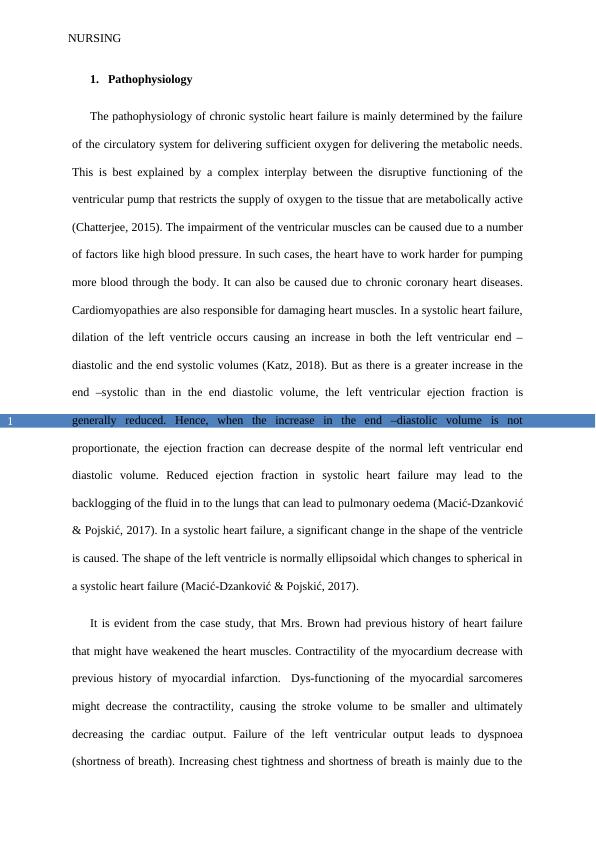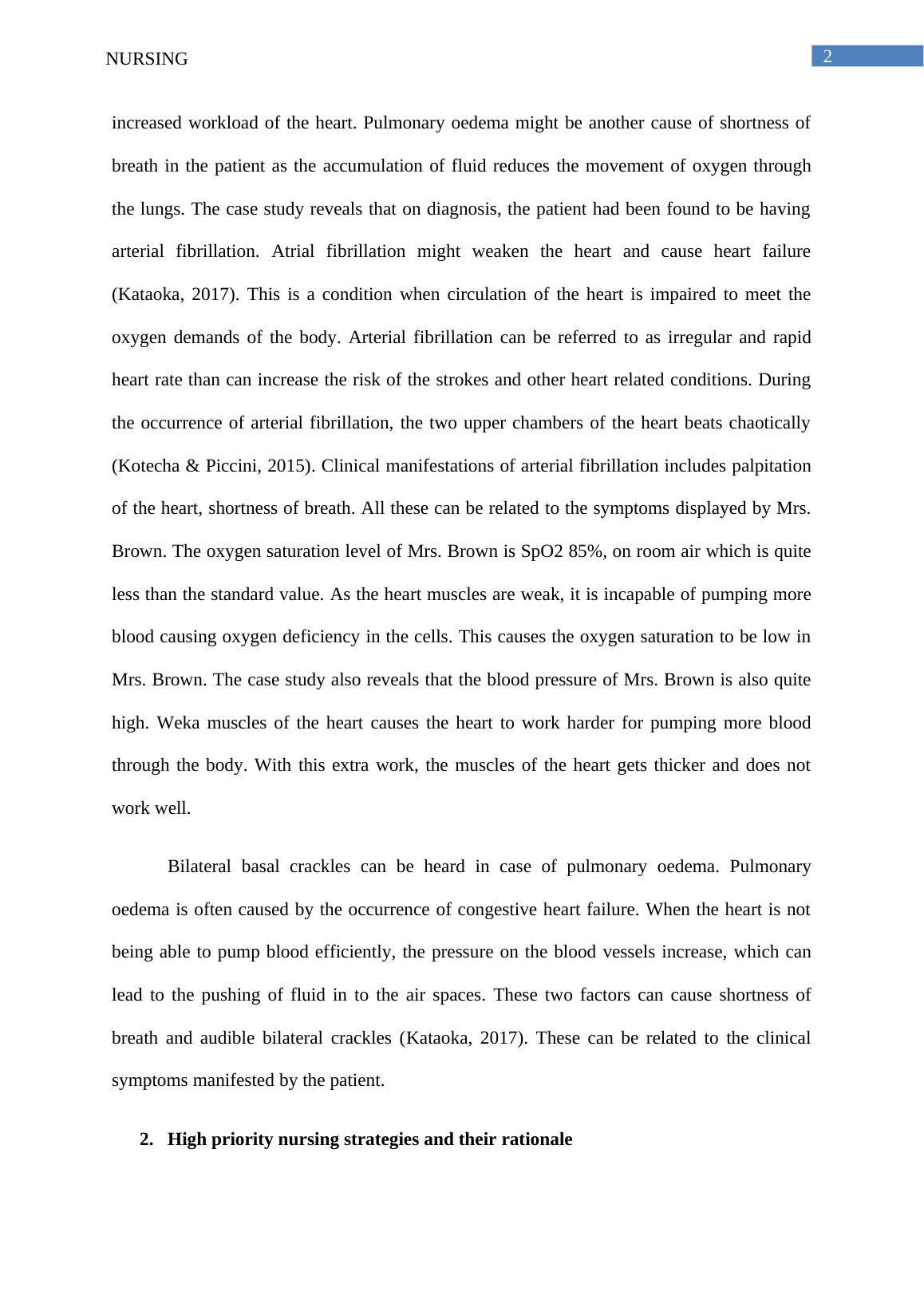Pathophysiology of Chronic Systolic Heart Failure and Nursing Strategies
The assignment requires students to create a concept map and provide guided question responses on the topic of systolic heart failure, including its causes, pathogenesis, clinical manifestations, diagnostic procedures, management, course, prognosis, and prevention. The assignment also requires discussing nursing strategies and evidence-based rationales for managing a patient with an acute exacerbation of chronic systolic heart failure. The assignment is worth 40% of the final grade and has a word limit of 1,500 words.
Added on 2022-10-12
About This Document
Pathophysiology of Chronic Systolic Heart Failure and Nursing Strategies
The assignment requires students to create a concept map and provide guided question responses on the topic of systolic heart failure, including its causes, pathogenesis, clinical manifestations, diagnostic procedures, management, course, prognosis, and prevention. The assignment also requires discussing nursing strategies and evidence-based rationales for managing a patient with an acute exacerbation of chronic systolic heart failure. The assignment is worth 40% of the final grade and has a word limit of 1,500 words.
Added on 2022-10-12
End of preview
Want to access all the pages? Upload your documents or become a member.



